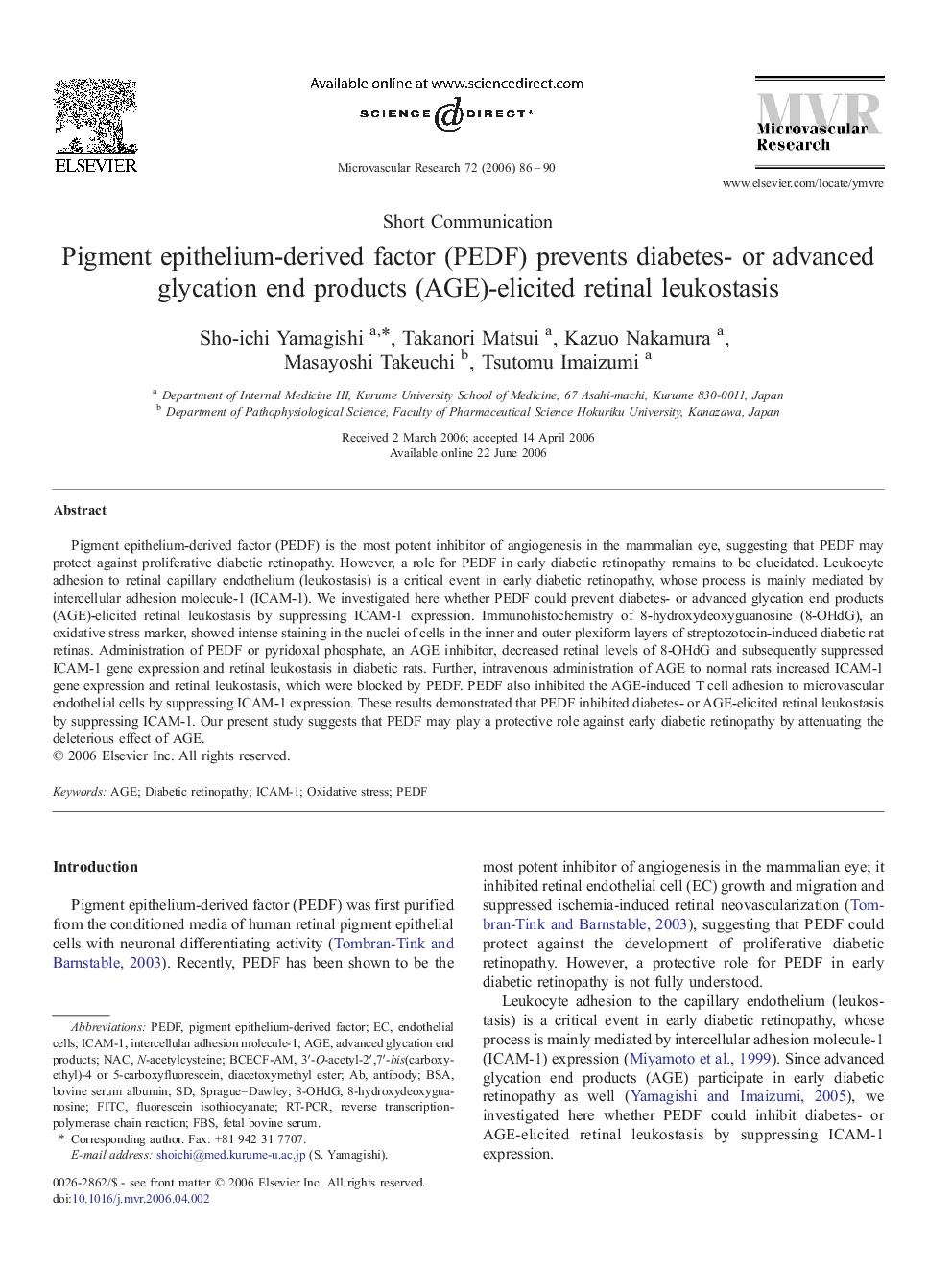| Article ID | Journal | Published Year | Pages | File Type |
|---|---|---|---|---|
| 1995551 | Microvascular Research | 2006 | 5 Pages |
Pigment epithelium-derived factor (PEDF) is the most potent inhibitor of angiogenesis in the mammalian eye, suggesting that PEDF may protect against proliferative diabetic retinopathy. However, a role for PEDF in early diabetic retinopathy remains to be elucidated. Leukocyte adhesion to retinal capillary endothelium (leukostasis) is a critical event in early diabetic retinopathy, whose process is mainly mediated by intercellular adhesion molecule-1 (ICAM-1). We investigated here whether PEDF could prevent diabetes- or advanced glycation end products (AGE)-elicited retinal leukostasis by suppressing ICAM-1 expression. Immunohistochemistry of 8-hydroxydeoxyguanosine (8-OHdG), an oxidative stress marker, showed intense staining in the nuclei of cells in the inner and outer plexiform layers of streptozotocin-induced diabetic rat retinas. Administration of PEDF or pyridoxal phosphate, an AGE inhibitor, decreased retinal levels of 8-OHdG and subsequently suppressed ICAM-1 gene expression and retinal leukostasis in diabetic rats. Further, intravenous administration of AGE to normal rats increased ICAM-1 gene expression and retinal leukostasis, which were blocked by PEDF. PEDF also inhibited the AGE-induced T cell adhesion to microvascular endothelial cells by suppressing ICAM-1 expression. These results demonstrated that PEDF inhibited diabetes- or AGE-elicited retinal leukostasis by suppressing ICAM-1. Our present study suggests that PEDF may play a protective role against early diabetic retinopathy by attenuating the deleterious effect of AGE.
